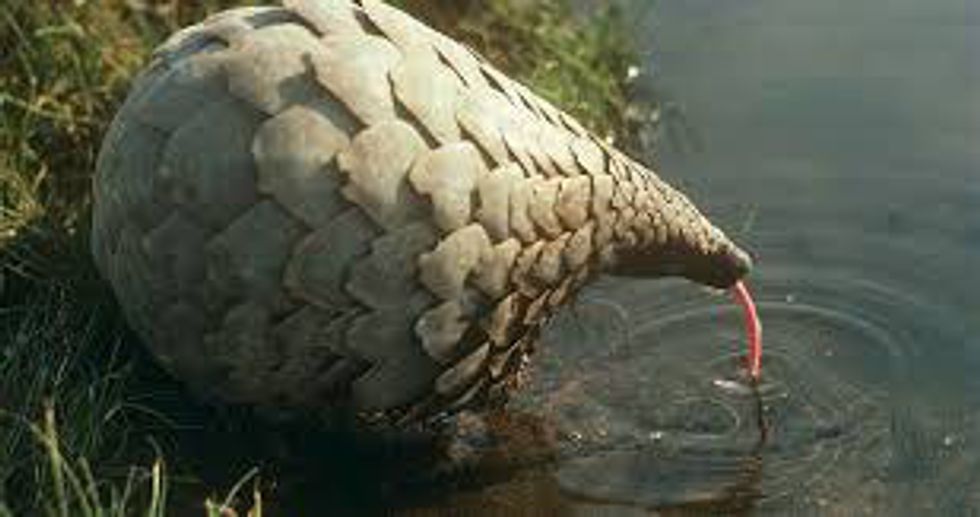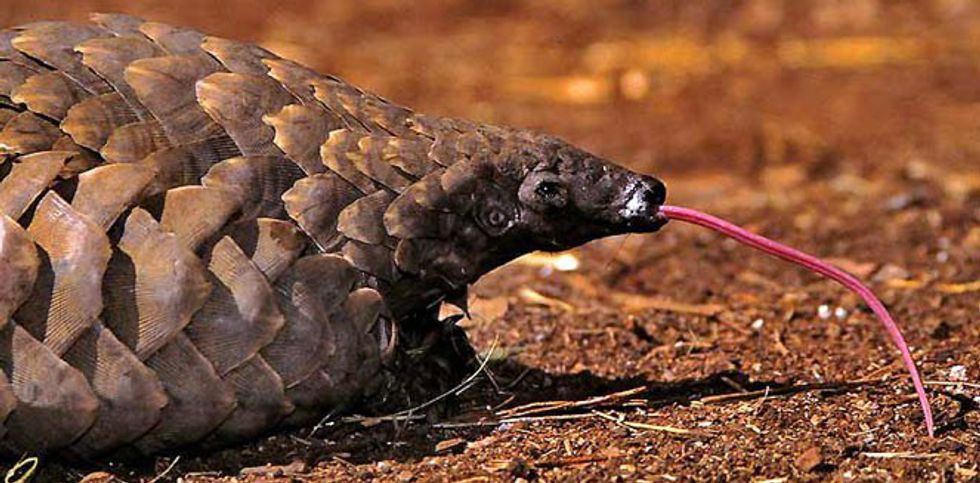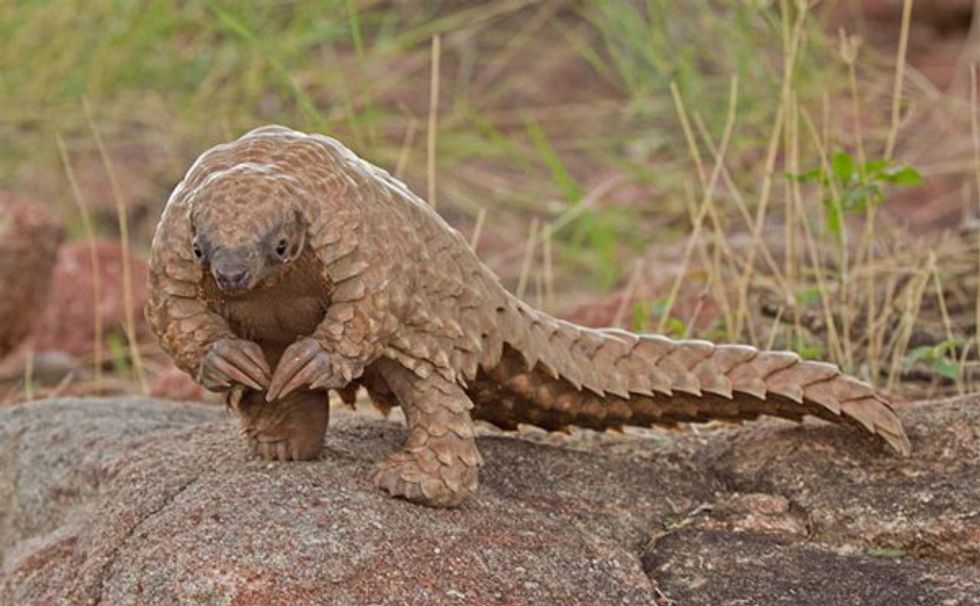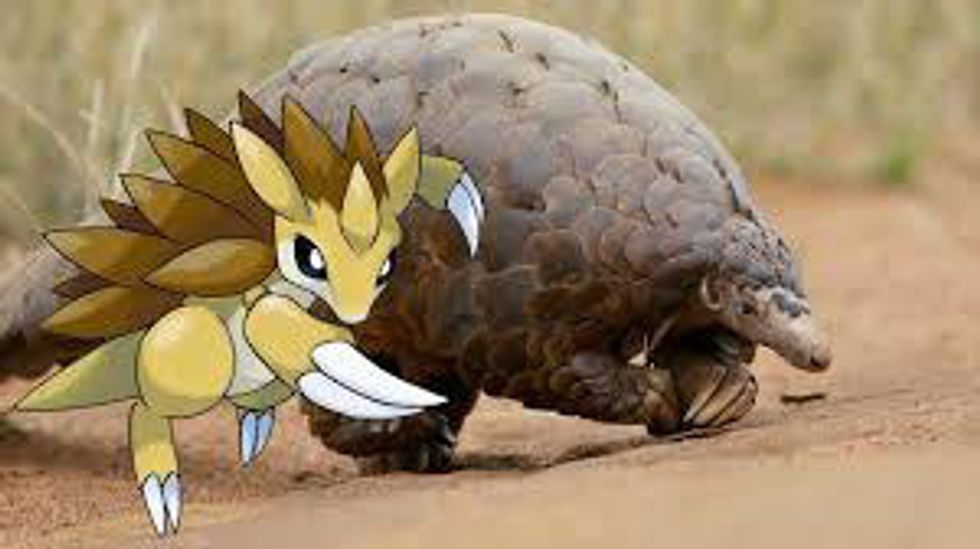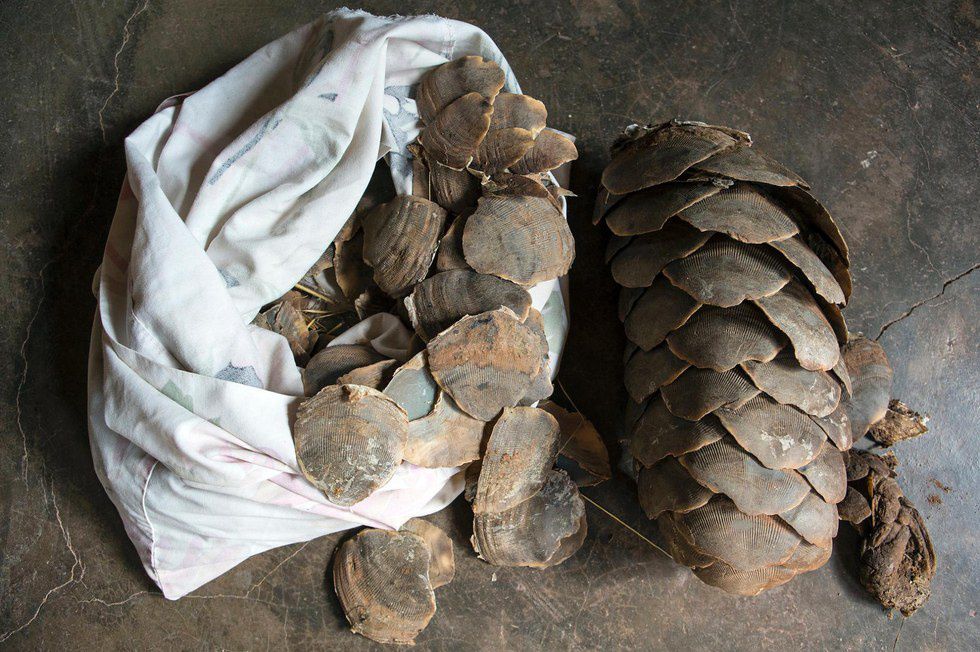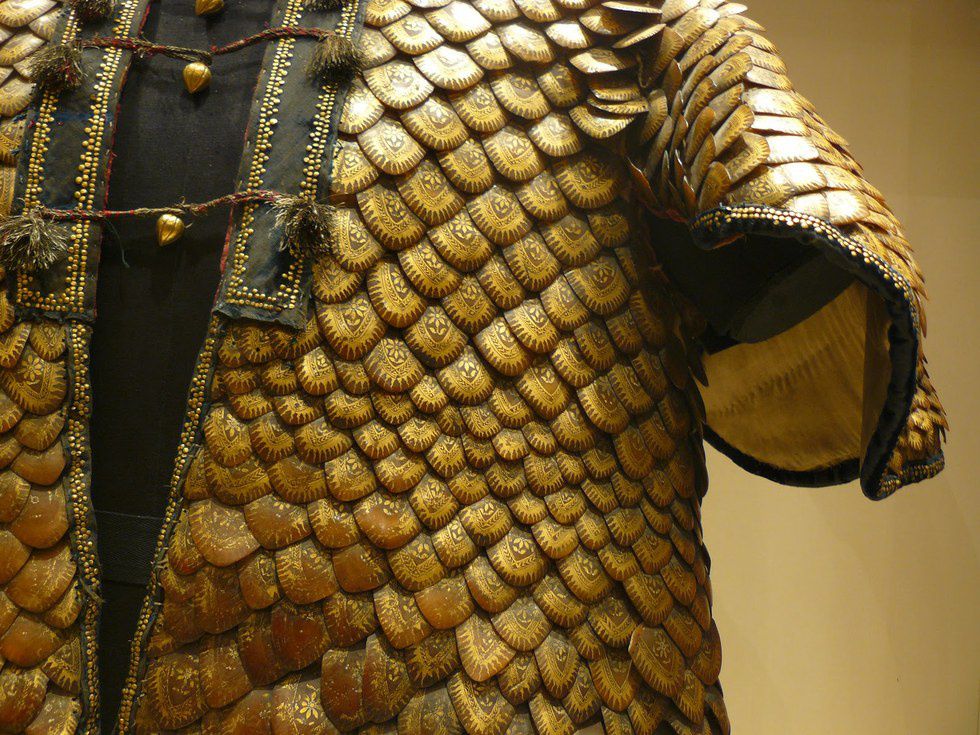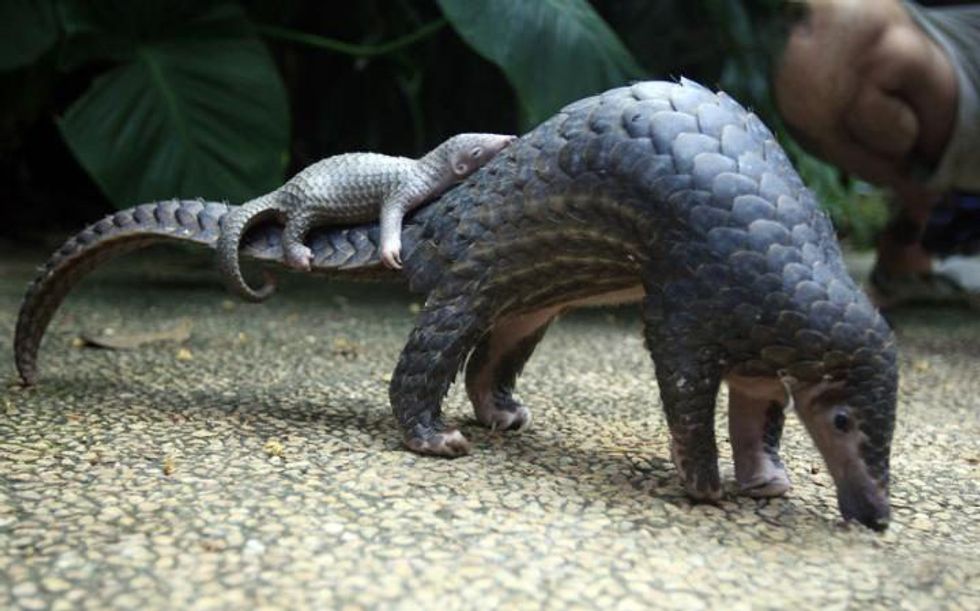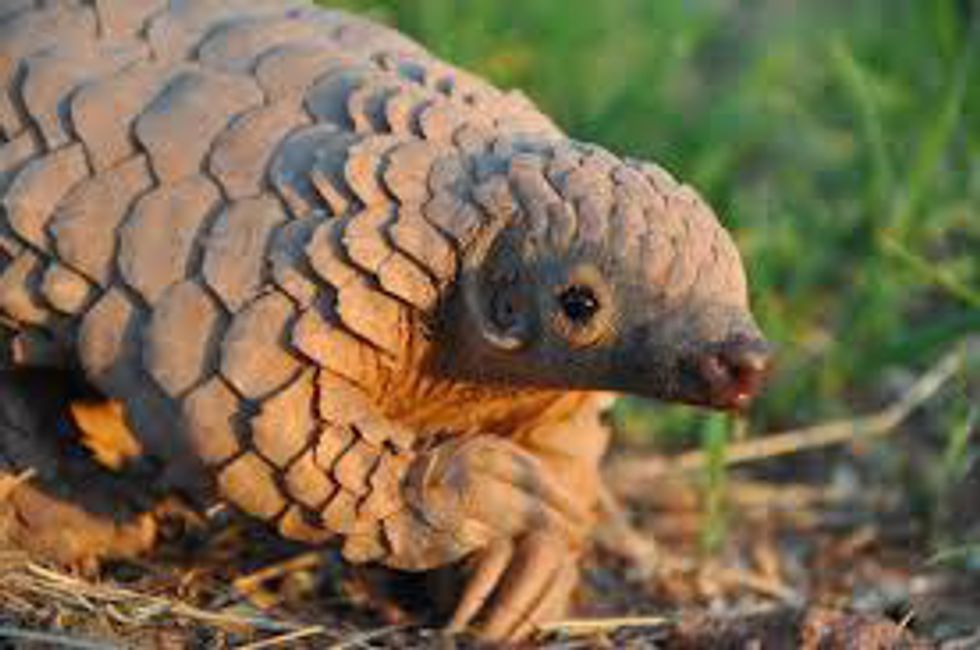Never thought pinecones, Pokémon, and saving women possessed by devils and ogres would ever have something in common? Well, I have a surprise for you. One of the least known animals in the western world ties all of those things together into one adorable scaly creature: the pangolin. Although they do not habitate the United States, doesn't mean more of us shouldn't know about them!
Here is 12 reasons to pay attention to pangolins:
1. Pangolins look like a mashup between a pinecone and a cat.
Despite their long tongues and big claws, these scaly creatures are basically pinecone cats.
2. Pangolins are the only mammals in the world covered in scales.
3. Pangolins don't have any teeth.
They instead have an extremely long tongue used to lick up ants and get into any and all crevices in ant colonies, as shown in the gif below.
Their tongues can be longer than their bodies when completely stretched out, up to 40cm long, the base of their tongues starting in their chest cavities.
4. Pangolins are considered to be "Africa's backhoe."
Due to their large claws, not unlike that of a sloth, pangolins are able to dig out rocks, hard packed dirt, and even the sides of ant colonies.5. Pangolins are the inspiration for the Pokémon Sandlash.
Although the pangolin may not be able to defeat its opponents with their claws, quills, and earthquakes, they seem to do just fine on their own when dealing with predators or that of an unsuspecting ant colony.6. Pangolins are the most illegally trafficked animals in the world.
Although they may stand up to natural predators on their own fairly well, these innocent and adorable creatures don't stand a chance against illegal poachers capturing and killing them for their scales and for meat. Although no one knows how many pangolins are still living in the wild, specialists believe their numbers to be shrinking, nearly a million have been captured from the wild in the last decade.
7. Pangolin scales have been used for various things through the years.
In China and Vietnam, pangolin scales are used in traditional medicine, from cures for hysterical crying in children and malarial fever and deafness to women possessed by devils and ogres. Pangolins are poached for their scales, captured and kept in captivity with no food or water as their scales are pulled off which they would then be dried, roasted, ashed, then cooked in butter, oil, or even boy's urine.In the 19th century scale armor was popular for warriors and their horses to wear, scales being made from leather, iron, horn, bronze, and, you guessed it, pangolin scales. Pictured below is the armor of a warrior from Rajasthan, India, a coat made of gilded pangolin scales.
9. Pangolins only produce once a year.
As babies, pangolin pups are carried on their mother's tail for three months and remain with the mothers until they are strong enough to live alone at five months. Because they only produce offspring once a year, the pangolin species are not able to quickly recover from the constant poaching and hunting done to them, forcing them into endangerment.
10. Pangolins are currently on a waiting list to be listed under the Endangered Species Act.
The International Fund for Animal Welfare and the Center for Biological Diversity petitioned for all seven species of pangolins to be listed under the Endangered Species Act. If they were to be listed under the act, they would be protected by the United States, proving to other countries (mostly that of Thailand, China, and Vietnam) that this is a serious issue and needs to be taken seriously. The law would make it illegal for pangolin products and animals to be imported into the U.S., eventually moving to close the trade markets found in the U.S. Sarah Uhlemann, the international program director at the Center for Biological Diversity said, "Having an endangered listing tells the world the U.S. is very serious about this."
11. Pangolins may already be extinct by the time they are put on the endangered species list.
The U.S. Fish and Wildlife Service has until July to make their decision of the petition, but there are those worried that the pangolin will already be gone before their decision. Sarah Uhlemann is one of those worried about the fate of the scaly creatures, saying "There’s the potential that pangolins could go extinct before people even know what they are." Pangolins are little known creatures in the U.S. despite their popularity in Asian and African countries, and therefore may not get as much help as the other more well known animals on the endangered animals list.
12. You can help save the pangolins!
Help save these adorable creatures from extinction while you can!
You can donate to the Pangolin Specialist Group and even learn more about our scaly little African friends: http://www.pangolinsg.org
(bonus: pangolins walk around on their hind legs since their claws are so large they cannot walk on them)




